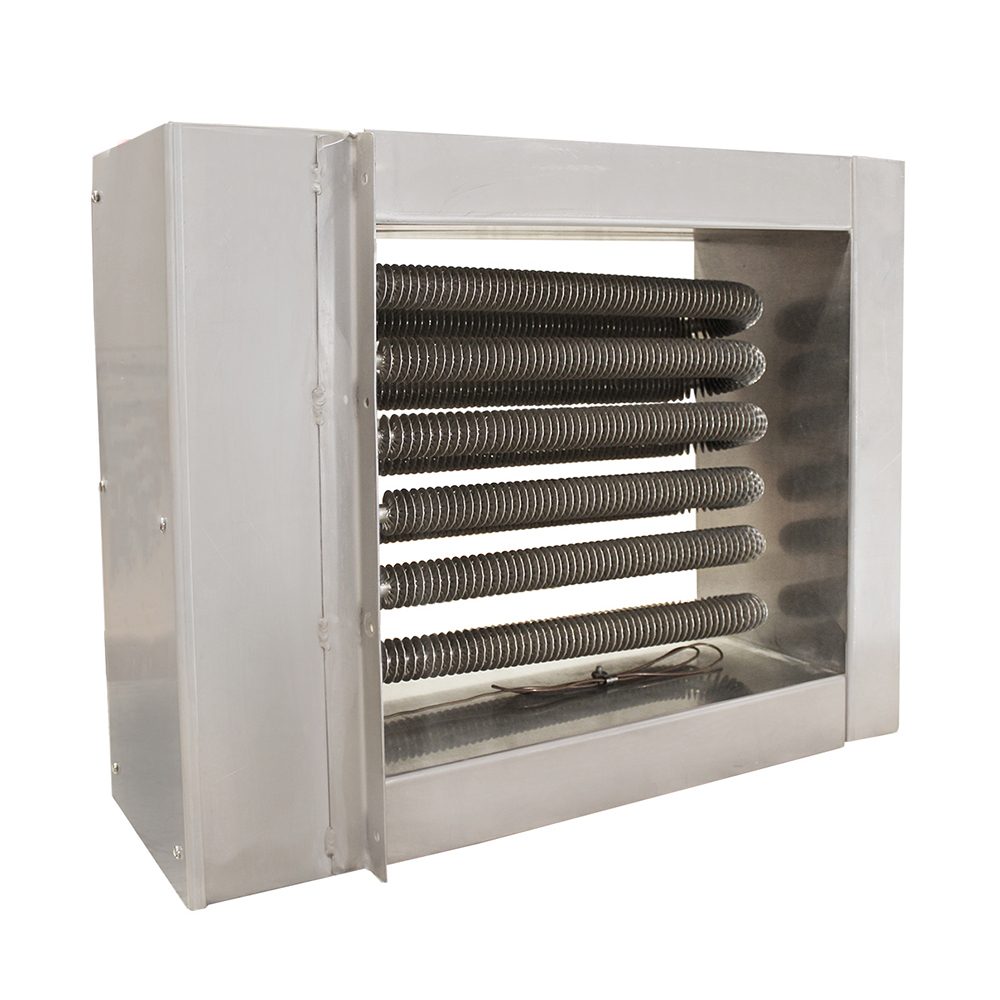Introduction to Air Duct Heaters
Air duct heaters are an essential component of HVAC systems, designed to rapidly increase the temperature of air flowing through ventilation ducts. They are widely used in commercial, industrial, and residential applications where fast and uniform heating is required. This article explores the mechanisms by which air duct heaters provide quick heat, their design considerations, efficiency factors, and practical applications.
Working Principles of Air Duct Heaters
Air duct heaters function by transferring heat directly to the air passing through the ductwork. They can be classified into electric and hot water/steam types, each offering different advantages in terms of speed and efficiency. The heating element or coil generates thermal energy, which is quickly absorbed by the moving air, ensuring rapid temperature rise.
Electric Air Duct Heaters
- Heating elements convert electrical energy into heat efficiently, often reaching high temperatures in seconds.
- Direct airflow over heating coils allows immediate heat transfer to the air.
- Integrated thermostats and control systems regulate output for consistent temperature rise.
Hot Water or Steam Air Duct Heaters
Hot water or steam-based duct heaters use a coil carrying heated fluid to warm the passing air. These systems provide high heat capacity and are ideal for larger HVAC setups. The speed of heating depends on fluid temperature, flow rate, and air velocity, with modern designs capable of quickly raising air temperature for immediate comfort.
Factors Influencing Heating Speed
Several key factors determine how quickly an air duct heater can warm air, including the heater’s power rating, airflow rate, duct design, and environmental conditions.
Heater Power and Capacity
- Higher wattage or thermal capacity directly increases heating speed.
- Electric heaters can respond almost instantly, while steam or hot water heaters may have slight lag due to fluid dynamics.
Airflow Rate
- Higher airflow can distribute heat quickly but may reduce temperature rise per unit of air if the heater is undersized.
- Optimized duct sizing and air velocity improve uniformity and speed of heating.
Duct Design and Insulation
Well-insulated ducts minimize heat loss during air movement, ensuring faster and more consistent temperature rise. Smooth and straight duct paths reduce turbulence and allow the heater to perform efficiently.
Efficiency and Energy Considerations
Fast heating is closely linked to energy efficiency. High-efficiency air duct heaters ensure rapid temperature rise without excessive energy consumption, reducing operational costs and environmental impact. Factors such as precise thermostatic control, staged heating, and variable speed fans can enhance both speed and efficiency.
Electric Heater Efficiency
- Nearly 100% of electrical energy converts to heat, providing rapid air temperature rise.
- Advanced control systems avoid overheating and maintain energy-efficient operation.
Fluid-Based Heater Efficiency
- Heat transfer efficiency depends on fluid temperature, coil design, and air contact time.
- Properly sized systems can heat air quickly while using energy efficiently.
Applications of Fast Heating Air Duct Heaters
Air duct heaters that heat air quickly are invaluable in various settings, including commercial buildings, industrial facilities, and residential environments. Rapid temperature control improves comfort, supports process heating, and maintains consistent conditions in sensitive areas such as server rooms or laboratories.
Commercial and Residential Applications
- Office buildings and homes benefit from immediate heating during cold weather.
- Hotels and hospitality environments use fast-heating duct systems for guest comfort.
Industrial Applications
- Manufacturing and processing facilities require rapid air heating to maintain process control.
- Warehouses and large halls benefit from uniform, fast-heated airflow for employee comfort.
Specialized Applications
Server rooms, laboratories, and cleanrooms often rely on fast-response air duct heaters to maintain precise temperature and humidity conditions. Quick heating ensures system stability and protects sensitive equipment or materials.
Design Considerations for Optimal Heating Speed
Selecting the right air duct heater involves considering power rating, airflow, duct dimensions, and control systems. Proper integration with the HVAC system ensures fast and efficient heating while maintaining safety and energy efficiency.
Key Design Tips
- Choose heaters with sufficient wattage to match airflow and duct volume.
- Use variable speed fans to balance airflow and heating rate.
- Implement thermostats or smart controls for precise temperature regulation and energy savings.
Conclusion
Air duct heaters are highly effective at quickly heating air in various applications. Their performance depends on heater type, power rating, airflow management, and system design. Electric and fluid-based heaters offer rapid temperature rise, while proper control systems enhance energy efficiency. Correctly designed and maintained air duct heaters ensure immediate comfort, consistent environmental conditions, and reliable operation across residential, commercial, and industrial settings.


 English
English русский
русский Français
Français Español
Español عربى
عربى
